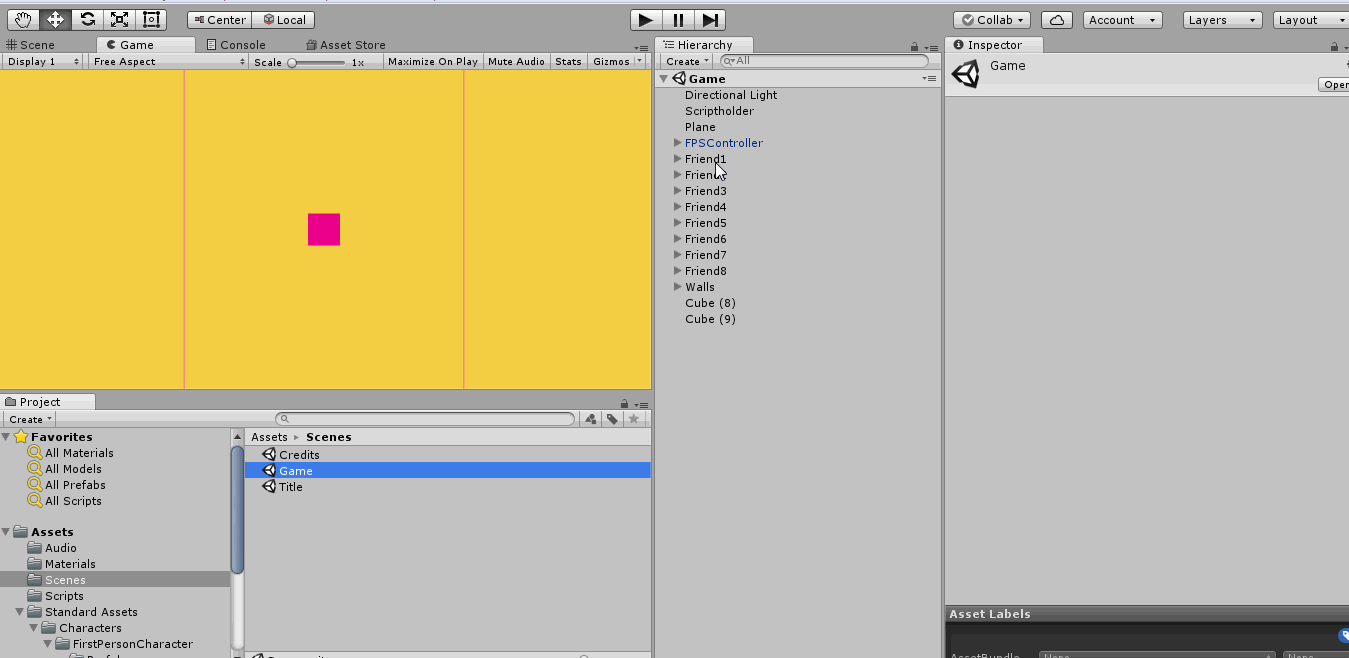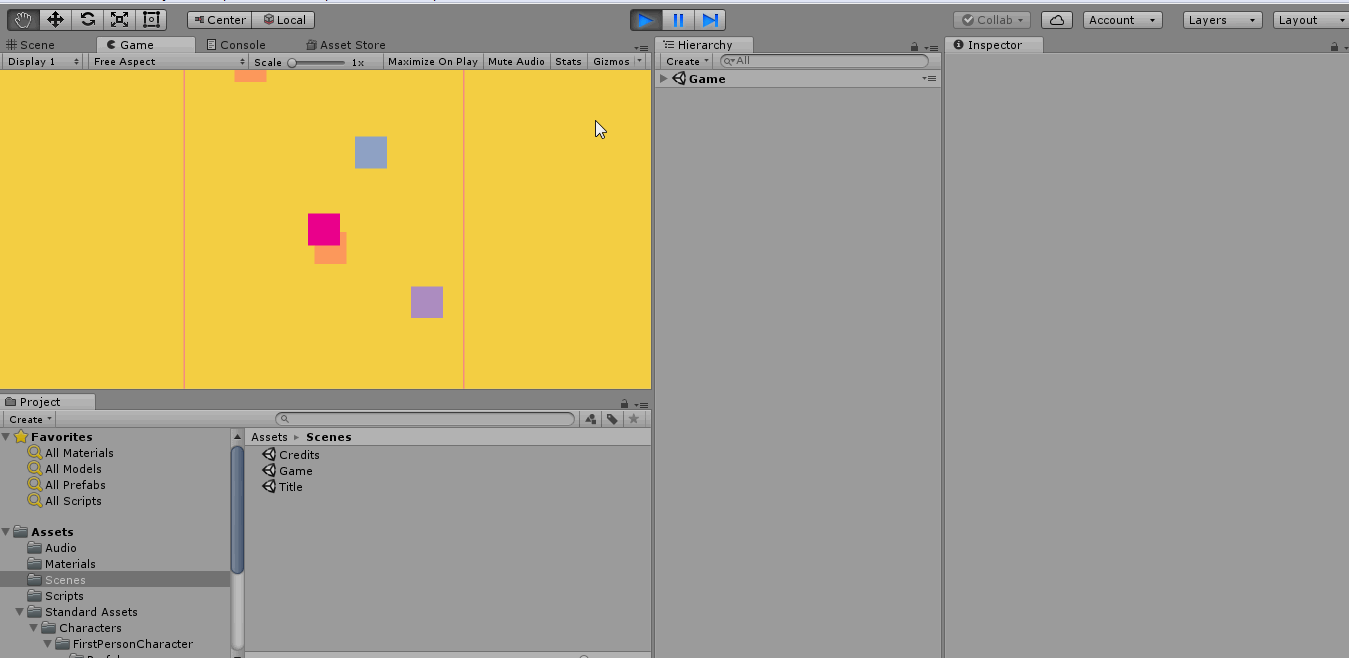I debated whether to name this week’s game Chorus or Arietta for a while. On the one hand, you’re one square, a solo individual, and arias are solo pieces. On the other hand, if you so choose, you can encounter the songs of many other squares, many other individuals, creating a chorus. Did I want it to feel inherently a little lonesome, or did I want it to feel warmer right off the bat?
I ended up settling on Arietta because I wanted to give the player the choice to add accompaniment to their solo. They only form a chorus if they want to.
An idea I was not able to act on but would like to incorporate into the game if I revisit it later was that, at the end, instead of playing the audio for a specific piano piece (a royalty free piece by Kevin MacLeod called “Avec Soin”), players would hear specifically the notes they chose to hit, in the order that they hit them, but at a set – and perhaps a bit faster – pace. If you hit all the cubes, you hear all the cubes. If you hit some, or hit them in a particular order, you would hear their notes in that order. And, if you did not hit any of them, you would reach the end and hear silence.

For a while, I intended to organize the squares so that they would create a song according to more traditional interpretations of what a song is. After talking about it during critique, however, I realized that they do create a song – it’s just a bit of an experimental piece, and that’s okay.
What does the song at the end mean? Maybe it is a win scenario. Maybe it is your prize. Maybe it is a reflection of your gameplay, or an invitation for you to reflect on your experience. Maybe you lost (no matter how you went through the game). Maybe it is a memorial. Maybe it has no meaning. Maybe it is the whole point of the game, the main part, the star, and you can only get there by experiencing this long pathway with all these squares in the way.
One of my critique partners noted that, because you’re touching all these other squares, and they’re making noise, but you’re not, it almost makes it feel like there’s something wrong with you, like you’re touching all these squares to try to figure out what’s wrong with you, and maybe to fix it.
Another comment made during critique brought up the idea that, after a while, you do start to make noise. Perhaps, when you’ve hit enough cubes, you start to sing too?

I think this game held a couple different meanings for me at different points in its development. Sometimes it felt like a calming experience made simply for the sake of being calming. Sometimes it felt like it was about meeting new people and hearing their experiences. Sometimes it felt like it was about making people around you happy by touching their lives somehow. Most of the time, it felt like it was about asking for help.
The end screen of Arietta reads “If you go it alone, you cannot make anything.” This is largely influenced by the final interpretation listed above, but may apply to any number of interpretations, I think.
An interesting part of the critique for me was watching how people maneuvered around the space. Of all the people who critiqued and played my game, only one tried to go down before going up. All but one felt the need to touch every square. The outlier touched a few, and then went straight through to the end. Only one person looped back down to hit squares they had already touched, changing the arrangement of the notes that they heard as they played. A few people started out avoiding the squares, and then touched one to find out what would happen. Almost every player hit the squares in the same order.
The individual notes, by the way, are from this project by the University of Iowa’s Electronic Music Studio. The color scheme is inspired by Papergirls, which I’m only two books into, but this palette has been influencing a lot of my work since I got the first book a month or two ago.

Awesome game and concept Violet; I like how much detail and thought you put into your games, they’ve all come out so well! I checked out the graphic novel that inspired the pallet you used; it looks cool, I’m just wondering if you recommend it, like is it worth the price to you?
Hey, Becca! Thanks so much! I know already talked to you about this in class today, but I think Papergirls is worth the price! There are a few elements of the novel I’m not really comfortable with that they employ to set the scene, but otherwise, it’s really beautifully illustrated!